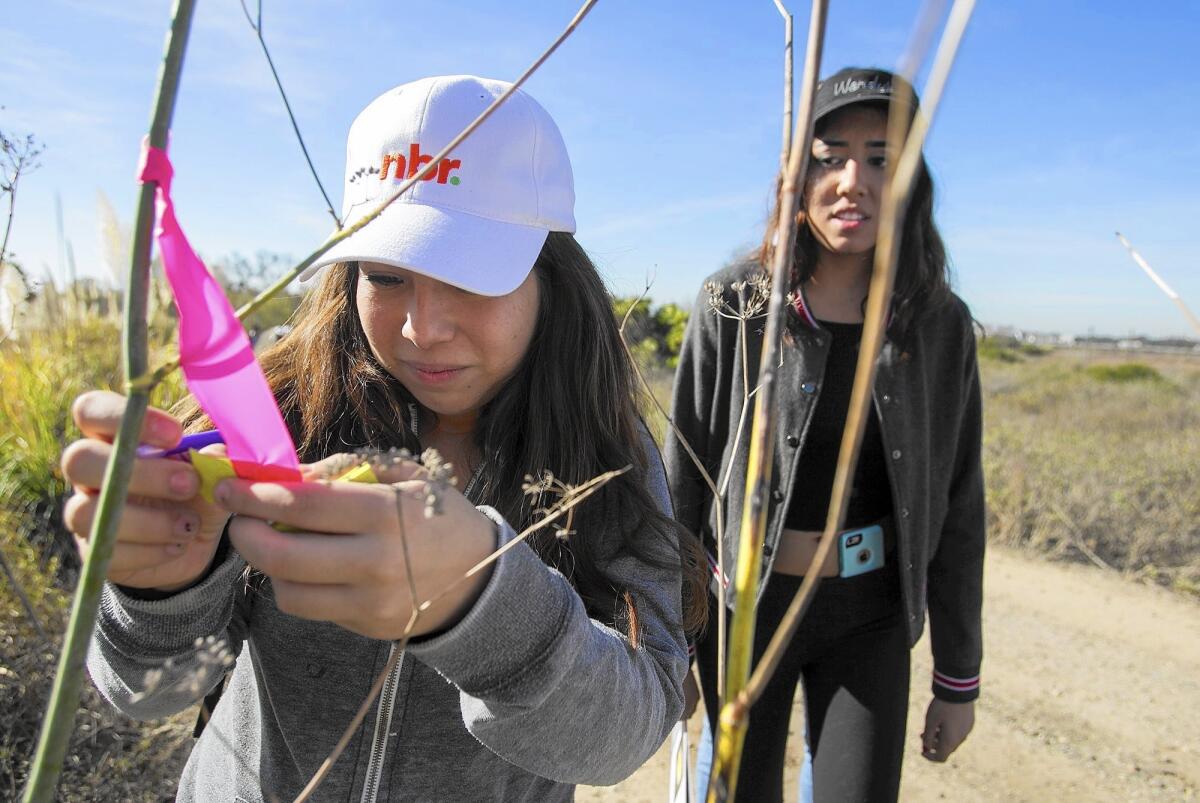Banning Ranch provides hands-on research for Costa Mesa High students

When students hear the words “research project,” a dreaded image of piles of books and mountains of documents may pop into their heads.
But for Costa Mesa High School’s science students, their research projects will allow them to get down and dirty in the field with the help of the Newport Banning Land Trust.
The Costa Mesa students in Karen Upthegrove’s Environmental Field Studies class took their third trip Tuesday to Newport Banning Ranch so far this school year.
The Costa Mesa students split into teams and raced to identify the different plant species spread out before them. Rather than reading about different survey methods, they did their own.
Using measuring tape laid out for them, they made notes on the types of bushes and flowers found on the Northeast Polygon site at Newport Banning Ranch.
“We’re doing all these estimates, collecting the data and actually seeing the environment ourselves versus just looking at a picture in the classroom,” said Dakota Fletcher, a senior at Costa Mesa High School.
The Newport Banning Land Trust developed the Science Research Program in partnership with the Institute for Conservation Research and Education in Huntington Beach so that students from Costa Mesa and Huntington Beach high schools could conduct field research there and in Fairview Park.
During last year’s pilot for the program, only students from Huntington Beach High School participated.
“What we want to help do is train the future leaders in conservation,” Newport Banning Land Trust executive director Robyn Vettraino said. “We are talking with other schools to even expand the programs next year and hope both of our current schools will return.”
Upthegrove’s class will use their time on the site to form a hypothesis and gather data for a year-long research project.
“We’re still gauging what our research questions are going to be, but being out here helps,” Dakota said.
The class, made up of most seniors and some juniors, will visit the NE Polygon site once every month until their project presentations in either May or June.
For the projects, Upthegrove said the students will form a research question on topics such as the site’s plant life, animal life or even its relation to El Niño.
Using survey methods they learned Tuesday, the class measured how many native plants were on the site versus how many invasive plants were present.
“There’s only so much you can learn in theory but it doesn’t hit home until you see what you’re learning about for yourself,” said Sheri Asgari, a restoration biologist for the NE Polygon site.
She said that as the class observes this site over a 10-month period, they will see the plant life change through different seasons and types of weather.
“I think coming here really helps us gain the knowledge,” said Ana Castaneda, Costa Mesa senior and president of the school’s Environmental Marine Academy Club. “Not everyone knows there are some plants that waste more water and harm the soil. It’s more complex than it seems.”
Upthegrove’s students will present their full projects in front of their fellow classmates, parents and representatives of the Newport Banning Land Trust sometime in May or June.
